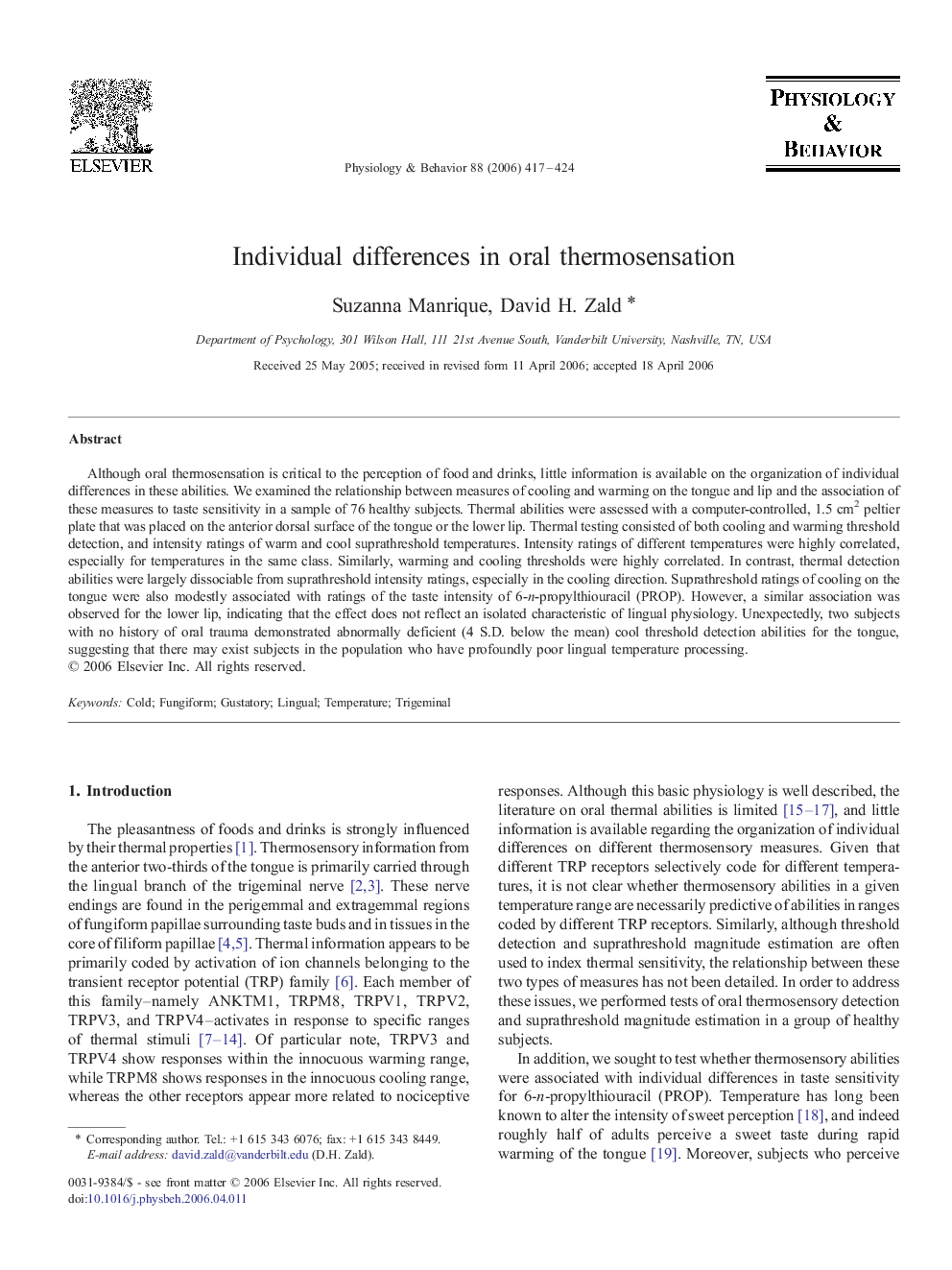| Article ID | Journal | Published Year | Pages | File Type |
|---|---|---|---|---|
| 2846240 | Physiology & Behavior | 2006 | 8 Pages |
Although oral thermosensation is critical to the perception of food and drinks, little information is available on the organization of individual differences in these abilities. We examined the relationship between measures of cooling and warming on the tongue and lip and the association of these measures to taste sensitivity in a sample of 76 healthy subjects. Thermal abilities were assessed with a computer-controlled, 1.5 cm2 peltier plate that was placed on the anterior dorsal surface of the tongue or the lower lip. Thermal testing consisted of both cooling and warming threshold detection, and intensity ratings of warm and cool suprathreshold temperatures. Intensity ratings of different temperatures were highly correlated, especially for temperatures in the same class. Similarly, warming and cooling thresholds were highly correlated. In contrast, thermal detection abilities were largely dissociable from suprathreshold intensity ratings, especially in the cooling direction. Suprathreshold ratings of cooling on the tongue were also modestly associated with ratings of the taste intensity of 6-n-propylthiouracil (PROP). However, a similar association was observed for the lower lip, indicating that the effect does not reflect an isolated characteristic of lingual physiology. Unexpectedly, two subjects with no history of oral trauma demonstrated abnormally deficient (4 S.D. below the mean) cool threshold detection abilities for the tongue, suggesting that there may exist subjects in the population who have profoundly poor lingual temperature processing.
